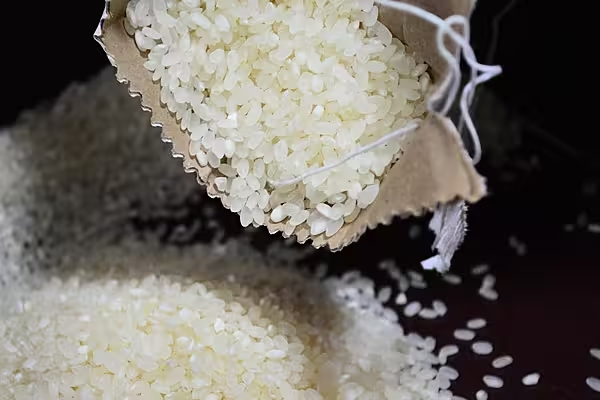Vietnam's rice export prices surged to a more than one-year high this week on strong demand from the Philippines and Malaysia, while rates for the Indian variety held steady at an over four-month peak.
Rates for Vietnam's benchmark 5% broken rice jumped to $380 a tonne — the highest since December 2018. Last week, prices hovered between $355 and $360 a tonne.
"We have received more orders from the Philippines and Malaysia recently, while supplies remain low as the winter-spring harvest has not yet peaked," a trader based in Ho Chi Minh City said.
Earlier this week, the Vietnam Food Association's vice chairman, Do Ha Nam, said the coronavirus epidemic in China had no impact on shipments of Vietnamese rice to China.
Vietnam expects to export 6.75 million tonnes of rice this year, up 6% from last year, Nam said.
"Prices of Vietnamese rice have room to even increase further as they remain significantly lower than in other rice-producing countries," another trader said.
Exports From Other Countries
In top exporter India, prices for the 5% broken parboiled variety were unchanged from last week at $371-$376 per tonne - their highest since late September.
"Subdued demand from Benin and South Africa is keeping the volumes low," said Nitin Gupta, vice president for Olam India's rice business.
Despite weak exports, local paddy rice prices were firm due to purchases by the state-run Food Corporation of India at the government-mandated rate, Gupta added.
Meanwhile, Bangladesh could impose a ban on exports of common rice amid a spike in domestic prices, a commerce ministry official said.
Earlier this month, the government offered traders a cash subsidy worth 15% of rice exports in a bid to compete with rivals and protect farmers struggling with low prices.
The cash incentives will still be applicable for aromatic rice exports, the official said.
Thailand's benchmark 5% broken rice was offered at $430-$445 a tonne, compared with $425-$447 last week. Traders attributed the price change to a fluctuation in the exchange rate.
"Demand is very quiet and concerns over supply persist due to the drought," a Bangkok-based trader said.
The dry season started in November and usually lasts through April, although this year authorities say it could persist into June, curbing rice production in many areas.
"Rice prices remain high compared to competitors and the little demand we had is mostly domestic as some are buying stock fearing shortage from the drought," another Bangkok-based rice trader said.
News by Reuters, edited by ESM. Click subscribe to sign up to ESM: European Supermarket Magazine.














